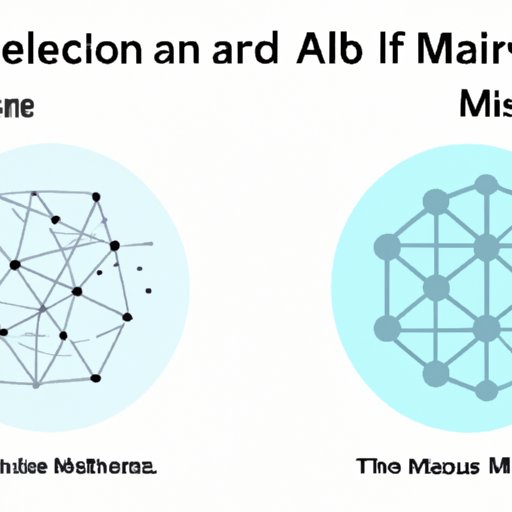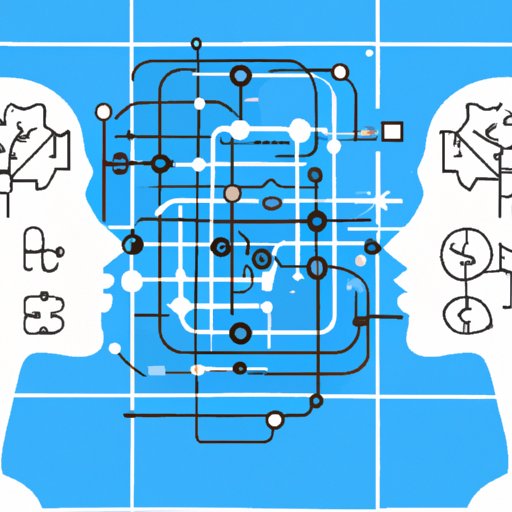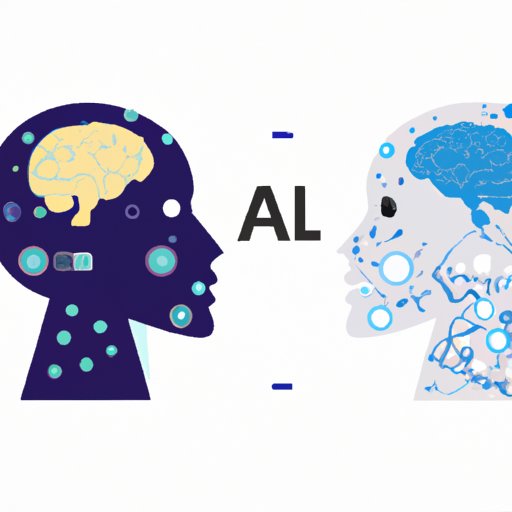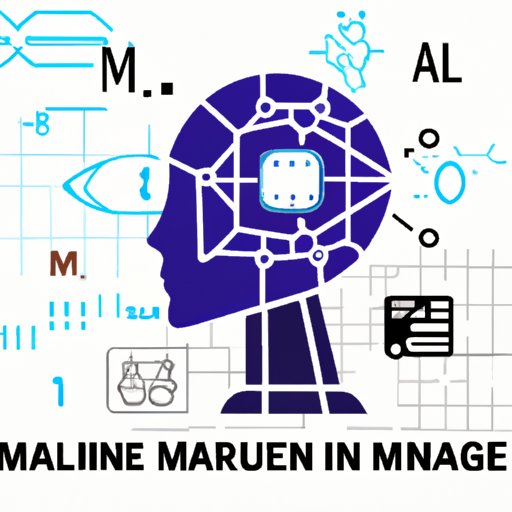Introduction
Artificial Intelligence (AI) and Machine Learning (ML) are two concepts that are often confused and used interchangeably. However, while there is a great deal of overlap between these two technologies, they are not the same. This article will explore the differences and similarities between AI and ML, and how they can be used together to solve complex problems.

An Overview of AI and ML: Exploring the Differences and Similarities
What is Artificial Intelligence (AI)? AI is an umbrella term that encompasses many different technologies, such as natural language processing, computer vision, speech recognition, robotics, and more. As defined by the Association for the Advancement of Artificial Intelligence, AI is “the science and engineering of making intelligent machines, especially intelligent computer programs.” In other words, AI is the development of computers and systems that can think and act like humans.
What is Machine Learning (ML)? ML is a subset of AI and is focused on developing algorithms that enable machines to learn from data without having to be explicitly programmed. According to the research firm Gartner, ML is “the scientific study of algorithms and statistical models that computer systems use to perform a specific task without using explicit instructions, relying on patterns and inference instead.” In other words, ML is the process of training machines to learn from data, identify patterns, and make decisions or predictions.
How do AI and ML differ? While both AI and ML involve the use of algorithms and data, they have different goals. AI is focused on creating systems that can think and act like humans, while ML is focused on training machines to learn from data and make decisions or predictions. Additionally, AI requires the use of sophisticated algorithms and techniques, such as deep learning, while ML relies on simpler algorithms and techniques, such as linear regression and decision trees.
Exploring the Intersection of AI and ML
What tasks can AI and ML perform together? AI and ML can be used together to solve complex problems that require both data analysis and decision-making. For example, AI and ML can be used to create self-driving cars, medical diagnostic systems, and fraud detection systems. Additionally, AI and ML can be used together to optimize processes, such as energy consumption and supply chain management.
What are the benefits of combining AI and ML? Combining AI and ML offers several advantages. First, it allows machines to make decisions based on data in real time. Second, it enables machines to adapt to changing conditions, such as customer preferences and environmental factors. Finally, it allows machines to make decisions faster and more accurately than humans.
What Are the Differences Between AI and ML?
Is AI always a subset of ML? While AI is often considered a subset of ML, this is not always the case. AI can exist without ML, as it involves the development of systems that can think and act like humans. Conversely, ML can exist without AI, as it involves the training of algorithms to learn from data and make decisions or predictions.
What roles do AI and ML play in problem-solving? AI and ML can both be used to solve complex problems. AI can be used to identify patterns and generate insights, while ML can be used to automate processes and make predictions. Additionally, AI and ML can be used together to create systems that can analyze data and make decisions in real time.

How AI and ML Work Together to Solve Problems
Examples of AI/ML solutions include chatbots, facial recognition systems, and recommendation engines. These solutions use AI and ML to identify patterns, generate insights, and make decisions or predictions. Additionally, AI and ML can be used together to automate processes, such as supply chain management and energy optimization.
What challenges arise when combining AI and ML? Combining AI and ML presents several challenges. First, it requires a large amount of data to train the algorithms. Second, it requires significant computing power to run the algorithms. Finally, it requires specialized expertise to develop and maintain the algorithms.

The Benefits and Challenges of Combining AI and ML
Advantages of using AI and ML together include the ability to analyze data in real time, the ability to adapt to changing conditions, and the ability to make decisions faster and more accurately than humans. Potential drawbacks of using AI and ML together include the need for a large amount of data, the need for significant computing power, and the need for specialized expertise.
Conclusion
In conclusion, AI and ML are two distinct but related technologies. While they have some similarities, they also have significant differences. AI is focused on creating systems that can think and act like humans, while ML is focused on training machines to learn from data and make decisions or predictions. Additionally, AI and ML can be used together to solve complex problems that require both data analysis and decision-making.
(Note: Is this article not meeting your expectations? Do you have knowledge or insights to share? Unlock new opportunities and expand your reach by joining our authors team. Click Registration to join us and share your expertise with our readers.)
